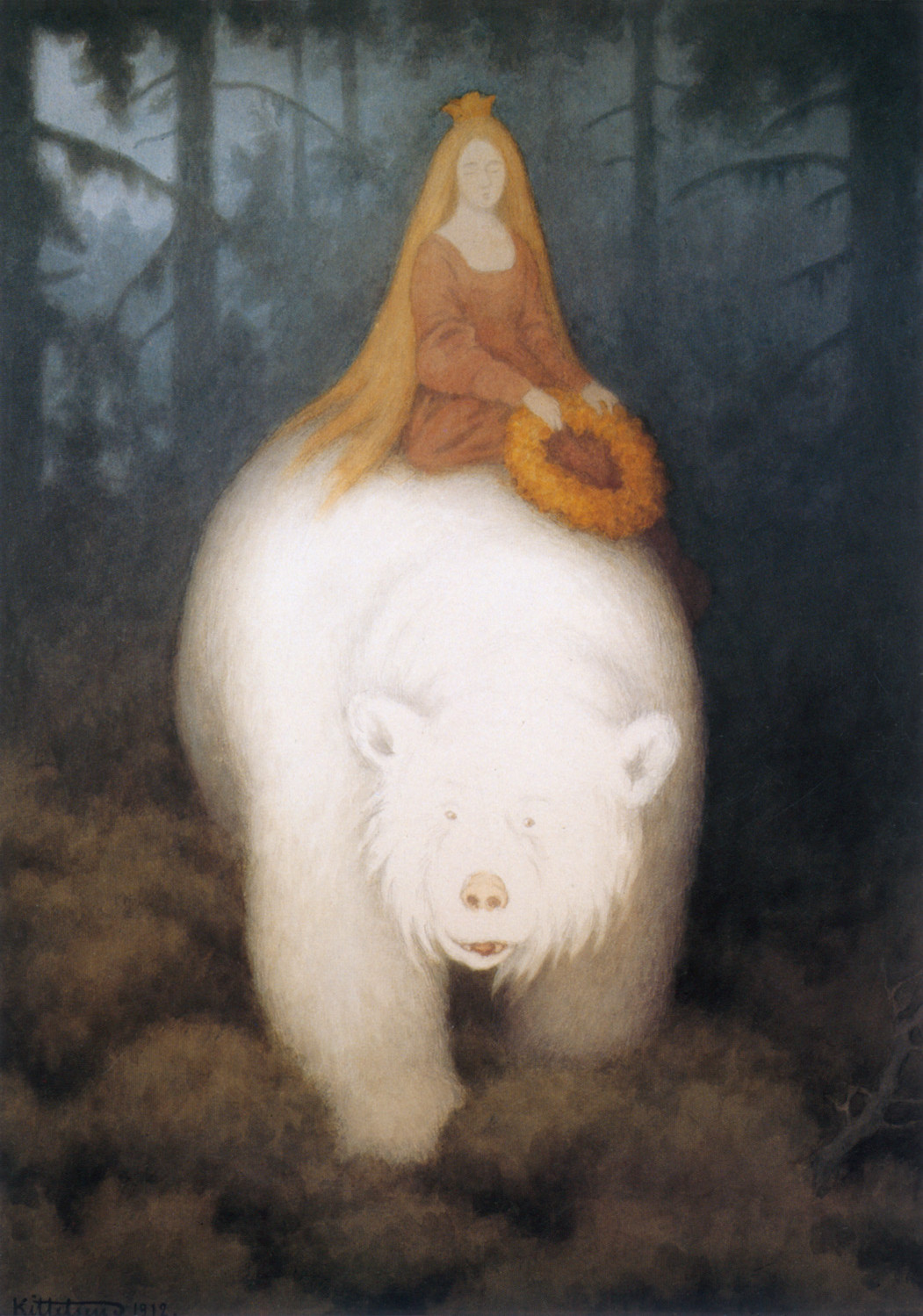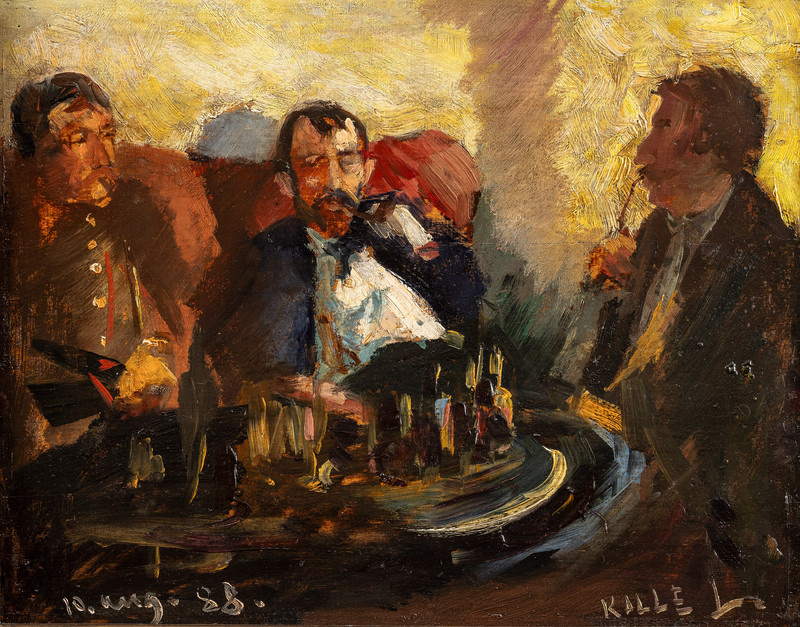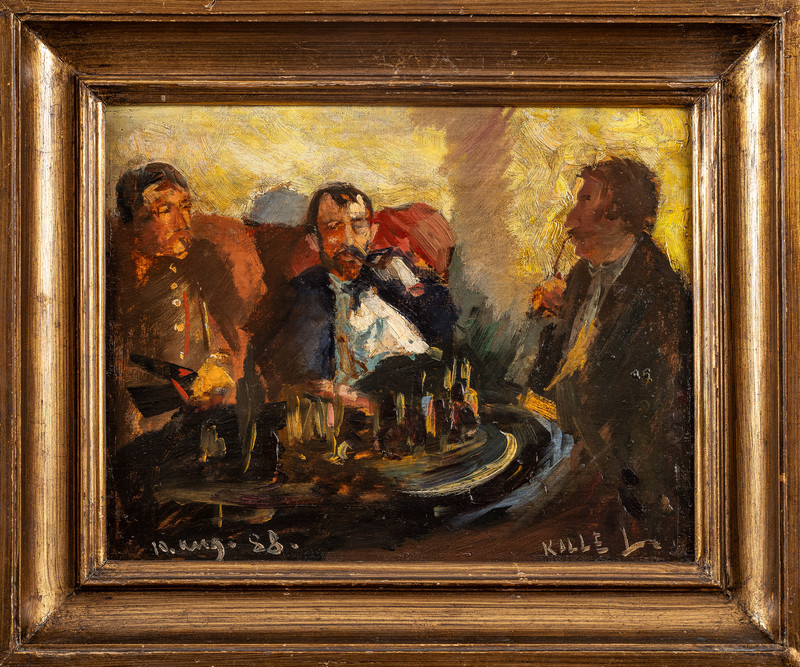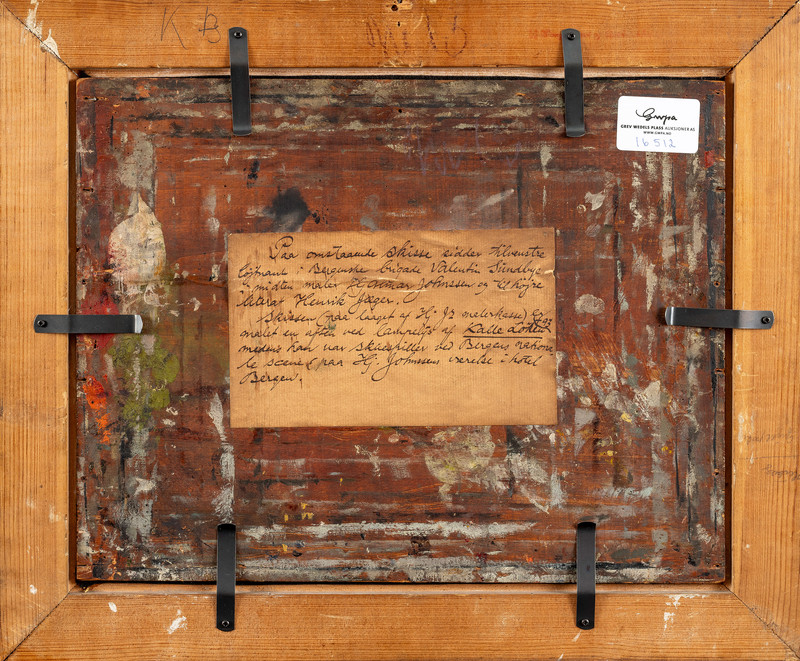Løchen was educated by Wilhelm von Hanno, followed by Julius Middelthun at the School of Arts and Crafts, before he started at the Knut Bergslien School of Painting. It was during his time at Bergslien that the young man decided that he wanted to become a painter.
Edvard Munch considered Løchen a close friend in his youth. They both belonged to the new generation of young Norwegian painters and met each other at the famous "Pultosten". The apartment building that went by this name was next door to Bergslien's painting school and was a popular place where young artists rented studios. In Norwegian art history, "Pultosten" has become a mythical place, where Norwegian artists met and gave each other instruction and correction. Of course, the social environment was also important in the time of change that the new generation lived through.
The end of the 1880s and the "bohemian era" was a rebellion against the conservative values and ideals of the established bourgeoisie. Art's established beauty requirements stood in contrast to the need for a naturalism and subjectivism, which sprouted in the young artists. Many looked to Paris, and Erik Werenskiold presented these new tendencies to the public in his text in Nyt Tidskrift, June 1888. Here Werenskiold wrote about the French Impressionists who challenged the Düsseldorf school with "new" motifs, expressive brushwork and lively use of colour. In addition, the Impressionists had managed to establish their annual exhibition in Paris, thus becoming available to a wide audience.
In Norway, this time also brought with it a naturalism in painting, which echoed what was happening in literature. Georg Brandes, Henrik Ibsen, Amalie Skram and Knut Hamsun were examples of writers who wanted to convey the world as it really was, without embellishing allegories and blurred gaze. Several Norwegian visual artists wanted the same from the visual arts. The new motifs became honest representations of the world with which they surrounded themselves, without taking into account that the art should be beautiful or modest, as the bourgeoisie wanted. One of our most famous protagonists of this in Norwegian art history is Christian Krohg.
Krohg is said to have discovered Løchen's talent as an artist early on, and was one of his greatest promoters. At this time, Løchen rented a studio in Sjøgaten 25 in Vika. This area was characterized by tired apartment buildings, prostitution and destitution. Løchen's studio not only gave him the opportunity to meet with Krohg, but also became the birthplace of his most talked about circle of motifs, rooftops. Løchen's paintings of roof tiles, windows and ridges show an artist who has a conscious relationship to the composition of lines, angles and light. Today, they are also of great value as documentation material of a district in Oslo that was redeveloped to make room for the City Hall and a cityscape that crept closer to the fjord and changed the landscape as we see it in Akershus in 1883. Løchen's vika landscape shows a young painter who made a brave choice by devising a new and unknown range of motifs in painting. But in Løchen's time, his paintings of rooftops were completely sabotaged by the public when he exhibited them at Blomqvist at the age of just 18. On the other hand, his fellow artists surrounded the young painter and praised him for his work. Jappe Nilsen referred to this effect as "a resounding Succés de Scandal". That same year, Løchen participates in Frits Thaulow's open-air academy at Modum, and paints what is considered his main artistic works; The painting school's studio at Modum, After a sleepless night, After rainand The old Drammensvei.
Løchen made his debut at the Autumn Exhibition in 1883 with The School of Painting's studio at Modum andAfter a Sleepless Night. The audience is merciless and calls the paintings a "horrible" realism. Today, these two motifs are seen as a clear nod to modern times and as a break with the beauty requirement that had dominated the Norwegian ideal of art. In his own time, Løchen received praise from both Edvard Munch and Ludvig Karsten for The painting school's studio at Modum. After a sleepless night is said to have been inspired by Krohg's Mother and child, from the visit to the Gaihede family in Skagen.
Løchen does not settle completely down as a painter, and in 1886 tries to establish himself as an actor. However, as many believe, his painterly practice does not diminish because of this and he paints with equal scope in the coming years while working as an actor. With a new circle of friends from the theatre and literature community, new motifs also arise. In Interior 1888 (Sketch of Three Gentlemen) , Løchen paints Lieutenant Valentin Sundbye from the Bergen Brigade, the painter Hjalmar Johnsen and the writer Henrik Jæger together in a merry evening. The composition consists of a golden backlight in contrast to the men dressed in black. The atmosphere is filled with smoke from cigarettes and several bottles can be seen in front on the table. The sketch was painted in Johnsen's hotel room at Hotel Bergen and the supporting material is actually the lid from Johnsen's own paint box. In addition to the cheerful mood of the motif, the sketch shows Løchen's creative whims and solutions.
The literature about Kalle Løchens tells of a young man who is constantly drawn to the various talents he has as a writer, painter and painter. After some time as an actor, Løchen takes a break from the theatre and travels to Paris in 1889 on an artist's scholarship. The plan was to attend classes with Léon Bonnat, but once in the vibrant city, he is drawn to the theatres. Nevertheless, one can read that Løchen became a gathering point for the Norwegian artists who gathered around Montmartre in the period 1889-1890. And even though he did not paint in Paris, his stay gave inspiration to his later works such as Portrait of H. Munthe, From the Foyer, The National Stage and After a Break (from Sollia Prestegård). In these paintings, one can see the influence of Edgar Degas and Henri de Toulouse-Lautrec.



